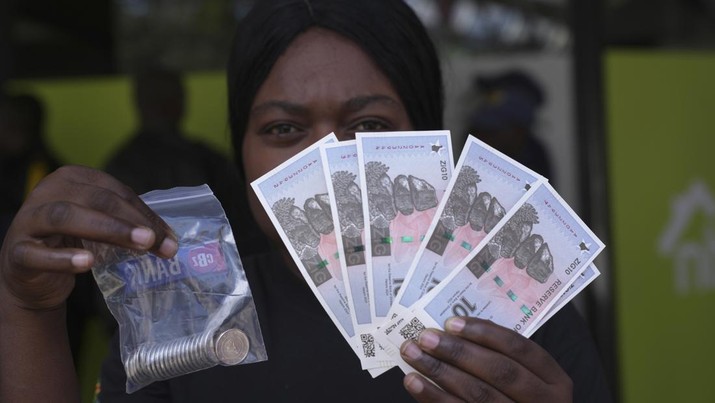Learning From The Dark Ages Of Physical Money, What Is The Future Of Crypto?
NEWYORK – This month, China’s central bank revealed that its digital currency, e-CNY, has been used for transactions worth 7 trillion yuan (Rp. 15.07 trillion) in the short time since its release. Quoting The Economist, the amount of China’s digital money transactions is equivalent to almost US$ 1 trillion. The Atlantic Council revealed that not only China, more than 130 countries are exploring digital currencies. Supporters of official digital currencies believe that the combination of ubiquitous smartphones, innovative cryptography, and massive computing power means it is possible to reimagine the financial system.
In other words, the future of money is a fascinating one. Adam Brzezinski of the London School of Economics, Nuno Palma of the University of Manchester, and François Velde of the Chicago Federal Reserve urge readers to take a hard look at the long history of money in their paper.
Money is capable of “pleasant surprises,” they say. It also bears some resemblance to what is considered a novelty today. A central bank digital currency, for example, could give people an account at a central bank. That sounds novel, but as some economists have noted, it also goes back to the past.
The Bank of England used to accept deposits from the public. In 1855, a hat seller on Regent Street was recorded as opening an account at the bank’s sleek new branch in Mayfair. And by 1900 the Bank of Spain held more than half the country’s checking accounts.
The study of history may also frustrate crypto enthusiasts who want to free money from government control. Monetary policy, which allows the state to manipulate money, is almost as old as money itself. Even when coins were made of gold or silver, governments manipulated their weight and purity.
The value of coins often diverged from their material value. In fact, governments sometimes diluted the silver content of smaller, more practical coins to prevent shortages.
Until the 19th century, coin values were rarely written on their faces. Coins did not have “face value” in this literal sense, as Brzezinski and his co-authors point out. This allowed for a separation between the two functions of money that are now seamlessly linked.
Coins served as a medium of exchange, a good that people exchanged for the things they bought. But they did not serve as a basis for valuing anything else.
Some old coins, however, that have since disappeared from circulation, were once used as benchmarks for the prices of goods and services. Historian Carlo Cipolla calls them “ghost money.”
Such a separation allowed the French court to conduct a major monetary policy experiment in the 1720s. In an effort to lower prices, a modern equivalent of Joe Biden’s US policy of the Reduction of Inflation Act, the king’s council decided, without warning, that coins would be worth less than before.
From 1723 to 1724, the board cut its value by 45%. The policy resembled the kind of thought experiment favored by economic theorists.
David Hume, for example, once imagined what would happen if £5 were “injected” into the pockets of everyone in England, doubling the money supply in the kingdom. He assumed that it would simply raise the prices of everything “without further consequence.” The French in 1724 also predicted that prices would fall rapidly.
They were wrong.
“Everybody is so accustomed to selling at a high price that no one can lower the price,” reported one observer, quoted by The Economist, Monday (23/9/2024).
It took almost four years for prices to return to normal. Meanwhile, France was in an industrial recession, with the number of looms in operation dropping by about 30%.
The French decision was reckless, forced on an economy suffering from inflation. It was therefore not a clean test of the effects of monetary shocks. Unfortunately, it is difficult to conduct randomized trials of monetary policy.
History, however, does provide “natural” experiments. In a previous paper, Brzezinski, Palma, and two co-authors explored one source of variation in the money supply in early modern Spain: disasters at sea.
Ships carrying treasure to Spain from the Americas sometimes encountered storms, pirates, or the British navy. In 42 incidents from 1531 to 1810, they lost some or all of the precious metals that Spanish merchants had expected to receive. The losses averaged 4% of Spain’s money supply.
Paper, a barbaric relic
In modern times, it seems strange to let the money supply become a supply for fortune. Why should it shrink when ships sink? Why should it expand when new silver deposits are discovered? Even in the 18th century, some visionaries thought money should sever its ties to metal.
The most prominent example is John Law, a Scottish banker and chancellor who somehow persuaded France to change its monetary arrangements in 1716. Law was ahead of his time, his experiments with fiat paper currency ending in disastrous inflation.
In the future, money may need to change form again. It may lose all physical manifestation, as coins and banknotes become obsolete. Bank deposits may be replaced by claims on monetary authority itself.
But some economists worry that such a transition also carries risks, making it easier to run out of cash, or even run out of physical assets.
While the form of money may be new, its effects are rarely neutral. And as Brzezinski and his co-authors show, it is cheaper to learn from past mistakes than to make instructive ones in the present.
